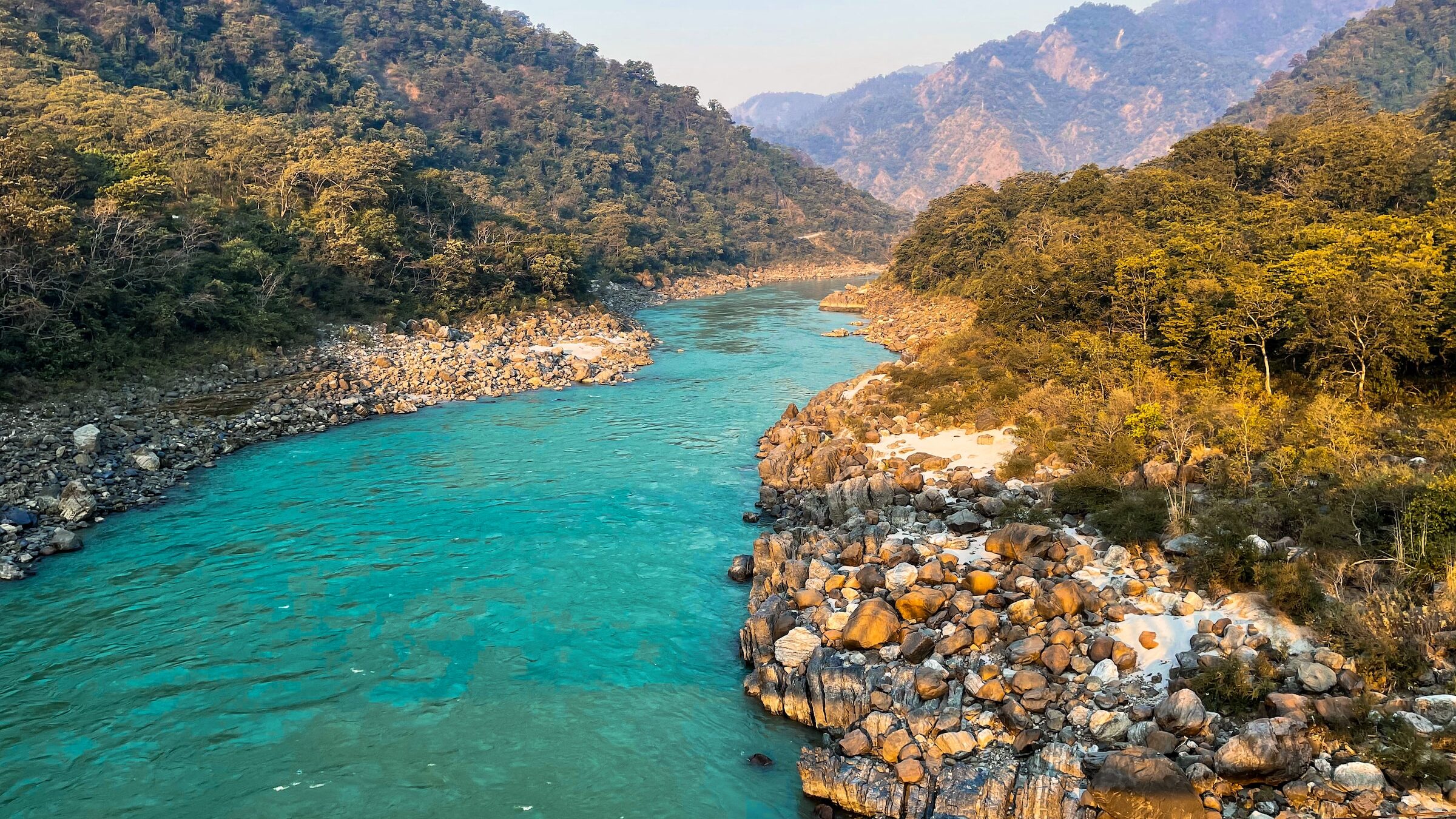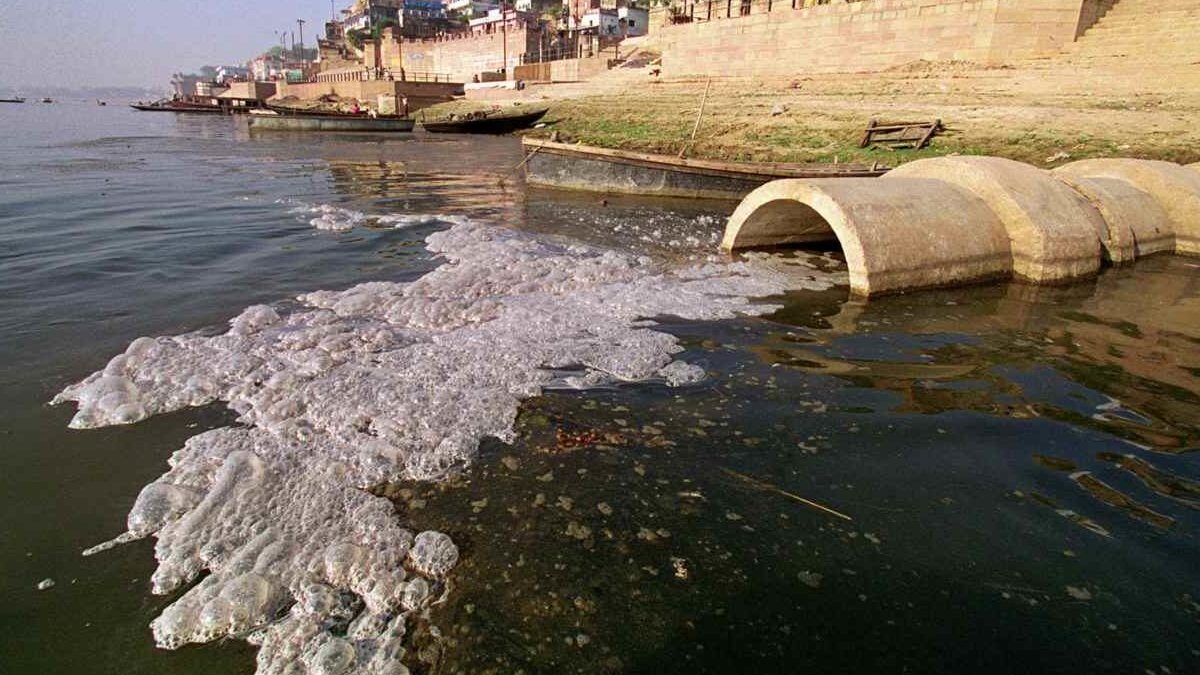The holy Ganga River, sacred and pure, flows through the heart of India, carrying with it a spiritual aura. Its waters symbolize purification, healing, and divine blessings, revered by millions across generations.

TheGanga, also called the Ganges, is more than just a river. It is important for spirituality, culture, and purification; many people in India and other places value it greatly. People consider it the “purest river” and believe it can wash away sins and offer salvation, attracting many pilgrims.
The Holy Ganga is considered pure for several reasons. It is thought to originate from the divine hair of Lord Shiva, which makes it holy. The river has unique qualities that help keep it clean, such as strong currents, high oxygen levels, and tiny organisms that break down waste.
The Ganga also has a significant role in supporting different ecosystems and wildlife, showing its ecological importance. However, the river faces challenges like pollution and excessive use of its water. Actions are being taken to clean and protect the Ganga, including cleaning initiatives and raising awareness about its conservation.
Overall, the Ganga has a special atmosphere that touches the hearts of those who encounter it. Its spiritual, cultural, and ecological value symbolizes purity and is a vital resource for millions of people. In this article, we delve into the reasons why the Ganga is regarded as the purest river and explore the factors contributing to its sanctity.
Spiritual Significance

The Ganga River, revered as the earthly embodiment of the goddess Ganga in Hinduism, holds immense spiritual significance. Bathing in its waters is believed to cleanse sins and bring spiritual purification. Pilgrims from all over India flock to its banks, engaging in rituals, prayers, and offering devotion to connecting with the divine. The holy Ganga symbolizes purity and divinity, with its waters considered to possess extraordinary spiritual power. Beyond its religious importance, the river is vital for India’s ecology and culture, supporting livelihoods and sustaining diverse ecosystems. It is a lifeline for millions of people, and its historical significance is evident in the cities, towns, and ancient sites along its banks.
Historical and Cultural Heritage

The Ganga River is very important historically and culturally because it has seen the rise and fall of civilizations over many years. Along its banks, many old temples, steps called ghats, and historical buildings show the area’s rich heritage. Poets, artists, and philosophers have found inspiration in the river, seeing it as a symbol of spiritual and artistic enlightenment.
The rituals, ceremonies, and festivals that take place on the Ganga’ riverbanks are deeply rooted in the religious beliefs and traditions of the people. Cities like Varanasi, one of the oldest cities in the world, and Allahabad, known for the meeting point of three sacred rivers, are closely connected to the Ganga. These cities have been religious and cultural centers for a long time, attracting visitors worldwide.
Ecological Importance

The Ganga River holds immense spiritual and ecological importance. Originating from the Himalayas, it traverses through northern India until it merges with the Bay of Bengal. Its ecological significance lies in its diverse ecosystem, which sustains the lives of millions. The river serves as a lifeline for agriculture, supporting various fish species and providing habitats for numerous aquatic and terrestrial animals. Additionally, it plays a vital role in recharging groundwater reserves, replenishing lakes and wetlands, and mitigating the effects of droughts and floods. The Ganga is not only a source of water and food but also a vital force in maintaining the delicate balance of nature in the region.
Natural Self-purification

The Ganga River is known for its extraordinary self-purification capacity, which sets it apart from other water bodies. With its fast-flowing current, the river prevents the buildup of pollutants, ensuring the constant movement and circulation of water. This rapid flow aids in the oxygenation of the river, promoting a healthier ecosystem. Furthermore, the holy Ganga contains bacteriophages, which are viruses that target harmful bacteria, thereby maintaining a balanced microbial environment.
The river’s waters also harbor specific algae and aquatic plants that play a crucial role in absorbing toxins and nutrients. This natural process contributes to water purification, making the holy Ganga a unique and remarkable phenomenon. By combining these distinct characteristics, the Ganga River sustains its self-cleaning ability, safeguarding the ecosystem and supporting diverse forms of life.
Spiritual and Medicinal Properties

According to ancient texts and traditional beliefs, the holy Ganga is believed to possess spiritual and medicinal properties. The water is considered amrit (nectar) and is used in religious ceremonies and rituals. It is believed to have the power to heal physical ailments, cleanse the mind and body, and even cure diseases. Scientific studies have also revealed the presence of bactericidal properties in the waters of the Ganga, attributed to certain naturally occurring substances. While further research is needed, these properties have garnered attention and interest from the scientific community.
Environmental Challenges

The Ganga, a revered river known for its purity and cultural significance, is currently plagued by a multitude of environmental obstacles. Urbanization, industrialization, and population expansion have resulted in the contamination and deterioration of this sacred water body. The uncontrolled discharge of untreated sewage, industrial effluents, agricultural runoff, and religious offerings has severely affected the overall water quality of the Ganga. Understanding the river’s significance, the Indian government has launched the Namami Gange project, an ambitious undertaking aimed at tackling these pressing issues and reviving and conserving the Ganga. Through this initiative, the government endeavors to restore the river’s ecological balance, implement effective waste management practices, and promote public awareness to ensure the long-term health and sanctity of the holy Ganga.
Conclusion
The holy Ganga River is very special and important. It means a lot to many people because it is not just a river, but also a source of spiritual beliefs, culture, and nature. People consider it the purest river because of its special qualities like self-cleaning ability and cultural importance. But the Ganga is in danger because of serious environmental problems. Everyone, including governments and individuals, must work together to keep it clean and safe. It is important to take action now to protect this precious natural resource for future generations. By working together and making continuous efforts, we can make sure that the holy Ganga remains a symbol of purity and respect for many years to come.
Keep visiting The Ganga Times for such beautiful articles. Follow us on Facebook, Twitter, Instagram, and Koo for regular updates.
